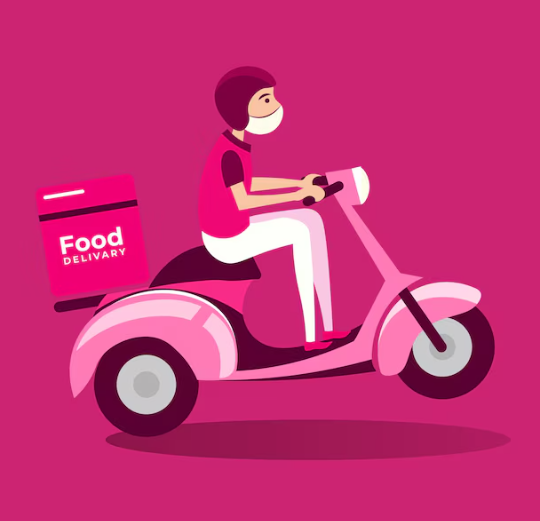
Step-by-Step Guide: Building a White Label Foodpanda Clone App
- Regular price
- $ 50.00
- Sale price
- $ 50.00
- Regular price
-
$ 100.00
Share

The online food delivery market has seen exponential growth over the past few years, driven by convenience, variety, and the increasing adoption of smartphones. Building a platform similar to Foodpanda can be a lucrative venture, and using a Foodpanda Clone Script can significantly ease the development process. This comprehensive guide will walk you through the essential steps to create a white label Foodpanda clone app, ensuring a robust and competitive product in the market.
Understanding the Foodpanda Clone
What is a Foodpanda Clone?
A Foodpanda clone is a pre-built software solution designed to replicate the functionality of the Foodpanda app. These clones provide a solid foundation upon which you can build and customize your food delivery platform. By utilizing a Foodpanda Clone Script, you can save time and resources, focusing instead on tailoring the app to meet your specific business needs.
Why Opt for a White Label Solution?
Opting for a white label solution offers several advantages. Firstly, it allows you to launch your app quickly without the extensive time required for development from scratch. Secondly, it offers cost-efficiency, as developing a complex app like Foodpanda can be expensive. Thirdly, white label solutions are highly customizable, enabling you to add unique features and branding elements that align with your business vision. Lastly, these solutions are scalable, ensuring your app can grow alongside your business.
Initial Planning and Research
Market Analysis
Before diving into development, conduct thorough market research. Understand your target audience, analyze competitors, and identify current trends in the food delivery market. This information will help you pinpoint gaps that your app can fill and determine the features that will make your platform stand out.
Defining Unique Selling Proposition (USP)
Your USP is what will differentiate your app from the competition. It could be faster delivery times, exclusive partnerships with popular restaurants, or innovative features that enhance user experience. A clear and compelling USP will attract users and retain their loyalty.
Legal and Regulatory Considerations
Navigating legal and regulatory requirements is crucial. Ensure compliance with local laws related to online food delivery, such as obtaining necessary licenses, adhering to health and safety standards, and implementing robust data privacy measures.
Technical Specifications and Development
Choosing the Right Technology Stack
Selecting the right technology stack is essential for building a scalable and efficient app. Consider the following components:
- Frontend: Technologies like React Native or Flutter for a responsive and cross-platform mobile application.
- Backend: Node.js or Django for a scalable and efficient server-side.
- Database: MongoDB or MySQL for effective data management.
- Payment Gateway: Integration with secure payment gateways like Stripe or PayPal.
- Geolocation Services: Google Maps API for real-time location tracking.
Core Features of a Foodpanda Clone
A successful Foodpanda Clone Script should include the following core features:
- User Registration and Profile Management: Simplified registration process with social media login options.
- Restaurant Listings and Menus: Detailed listings with menu options, prices, and restaurant details.
- Search and Filters: Advanced search and filter options to help users find their desired food items quickly.
- Order Placement and Tracking: Smooth order placement process with real-time tracking of delivery status.
- Payment Integration: Multiple payment options for user convenience.
- Reviews and Ratings: User feedback system for rating restaurants and delivery experience.
- Push Notifications: Timely notifications for order status updates, promotions, and offers.
- Admin Panel for Management: Comprehensive admin panel to manage users, restaurants, orders, and app settings.
Development Process
Requirement Analysis and Planning
Begin with a detailed requirement analysis. Document all the features and functionalities you want in your app and create a project roadmap outlining development phases, milestones, and timelines. This will provide a clear path for the development process.
UI/UX Design
A user-friendly interface is crucial for the success of your app. Focus on creating intuitive navigation, attractive design, and a responsive layout. Ensure that users can easily browse restaurants, place orders, and track their deliveries.
Development Phases
Frontend Development
Develop the mobile application using your chosen framework. The frontend should provide a smooth and responsive user experience, ensuring that all features are accessible and easy to use.
Backend Development
Set up the server, database, and APIs to handle the app’s functionalities. Ensure that the backend is scalable and secure, capable of handling a large number of users and transactions.
Integration
Integrate all third-party services such as payment gateways, geolocation services, and push notifications. Ensure seamless communication between the frontend and backend to provide a smooth user experience.
Testing
Conduct thorough testing to identify and fix any bugs or issues. Perform various tests such as unit testing for individual components, integration testing to ensure different components work together seamlessly, and user acceptance testing to get feedback from real users and make necessary adjustments.
Read more:- Supercharge Your Marketing on Google
Deployment and Post-Launch Activities
App Deployment
Once testing is complete, deploy your app on popular platforms such as the Google Play Store and Apple App Store. Ensure that all configurations are correct for a smooth launch.
Marketing and Promotion
Develop a comprehensive marketing strategy to promote your app. Utilize various channels such as social media, search engine optimization (SEO), content marketing, and paid advertising to reach your target audience.
Collecting User Feedback
Collect user feedback to identify areas for improvement. Regularly update your app with new features, improvements, and bug fixes to enhance user experience and stay competitive.
Providing Customer Support
Provide excellent customer support to address any issues or queries users might have. A dedicated support team can help in retaining customers and building a loyal user base.
Conclusion
Building a white label Foodpanda clone app using a Foodpanda Clone Script is a strategic way to enter the lucrative online food delivery market. By following this step-by-step guide, you can develop a robust and competitive app that meets the needs of your target audience. Thorough planning, meticulous development, and continuous improvement are key to the success of your food delivery platform. With the right approach and dedication, your app can thrive in the dynamic and growing online food delivery industry.


